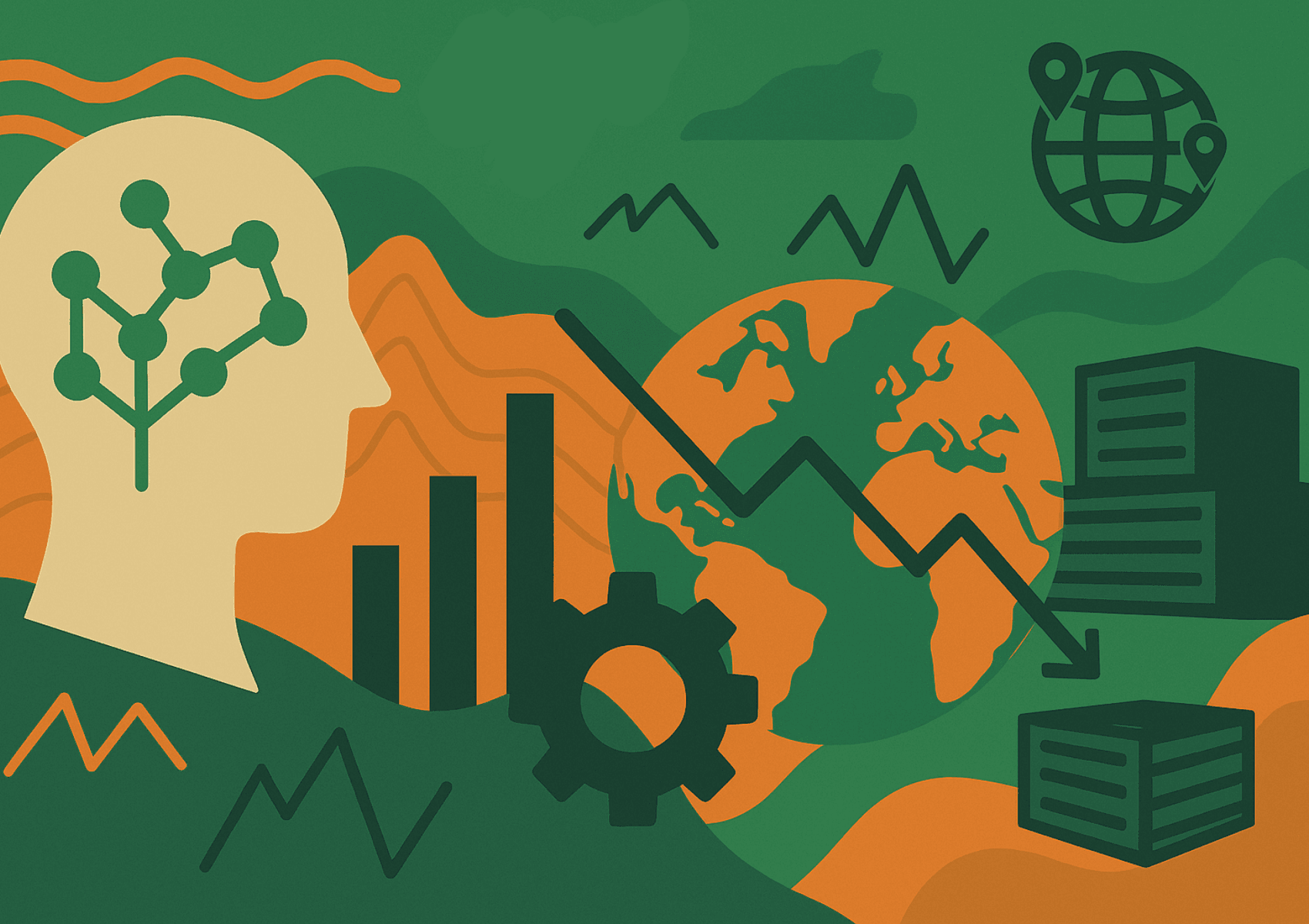From What-Now to What-If: Rethinking Supply Chain Risk Mitigation with World Models
Michaela Murphy
Jul 23, 2025

Building AI for Organisational Resilience to Geopolitical Risk
What if tariffs are imposed overnight, instantly doubling, or even quadrupling, the cost of materials from your primary supplier in Brazil?
What if a key port shuts down due to political unrest, and your shipments are stuck in limbo for days, weeks, or even months?
What if a hurricane reroutes cargo away from the Gulf, or a drought halts container ships in the Panama Canal?
These are not proactive hypothetical questions anymore. They are the new normal.
Global supply chains operate in a constant state of flux; events and decisions continents away ripple through operations within hours as trade policy, climate volatility, and conflict introduce cascading waves of disruptions without notice.
The problem is that traditional tools are too antiquated to handle the nuance of today’s global landscape. Decision-making based solely on historical data (or data sequestered in manual processes, emails, decks and siloed systems) crumble under pressure. These approaches can’t keep up with real-time complexity and rarely provide the full picture needed to make confident, forward-looking decisions.
Organisations need a plan for every what-if; however, how can an enterprise build an armoury to prepare for disruption, respond with speed, and recover with resilience?
To navigate this reality, organisations don’t just need predictions of what could happen under certain external events and decision-making, they require understanding and reasoning. They need to be equipped with the knowledge of how their internal operations behave under pressure and under changing circumstances.
With that we say: All you need is a world model
In our previous article, Move Over LLMs, Objective-Driven AI Can Actually Predict the Future: An Introduction to World Models, we introduced the utility of world models through exploring the scope of their application across industries, including supply chain and manufacturing.
Specifically, we took a quick look at how the application of an AI world model and scenario modelling could accelerate a bespoke automotive company to successfully integrate 3D printing into its operations. In that particular use case, the value was clear: through simulating the interplay between raw material availability, equipment status, labor dynamics, and output, a manufacturing leader would be able to anticipate bottlenecks, monitor workforce adaptation, and optimise production to ensure smooth integration and utility for the entire factory.
But in today’s supply chain environment, we need to take a step back to refocus on a systems wide-approach as unpredictability has drastically intensified. What previously felt like individualised hurdles to anticipate and respond to, emerging risks are now shifting realities, as disruptions no longer interfere with isolated processes, but entire operations. Luckily, the same principles that make world models valuable on the factory floor now make them essential for entire supply chain visibility.
From Reaction to Readiness
As established, relying on historical data or mapping supply chain processes into a process map isn't enough anymore. In an era defined by volatility, uncertainty, and complex interdependencies, organisations must shift their perspective from reactions to focusing on readiness.
That starts with a fundamental shift back to first principles: asking the important, basic, questions to better understand the system and prepare for what could go wrong; instead of reacting after problems occur, we ask questions that challenge preconceived assumptions:
What do we do if a key supplier is hit by trade restrictions?
How do we maintain service levels if a primary shipping hub shuts down? Can we quickly reroute shipments if ports are disrupted?
How do we handle repeated raw material quality issues from a supplier?
First principles and scenario modeling helps organisations build readiness to challenges through simulating what might happen, allowing decision-makers to explore the chain reaction of events and understand critical questions with precision and foresight, so they can prepare before problems spiral out of control.
Scenario modeling enables individuals to explore these types of forward-thinking questions with clarity and granularity: quantifying the downstream effects of any intervention and making decisions grounded in system wide end-to-end understanding.
Through this lens, organisations can:
Simulate supply impacts originating in conflict zones
Test alternate supply sourcing options and strategies
Quantify risk to delivery timelines and other KPIs under a range of scenarios
This approach drives proactive plans and interventions that prepare companies towards an optimal outcome, rather than focusing on reactive damage control.
But, what does it look like in practice:
For a plant operator, this means knowing whether a material substitution is viable without compromising safety.
For a demand planner, it means spotting lead time blowups before they ripple through production and impact customers.
For an executive, it means understanding how international geopolitical shifts could impact cost-to-deliver in Europe and develop proactive playbooks months in advance.
These types of forward-looking questions and practical preparations are what set resilient organisations apart. Resilience is no longer only about bouncing back, it's building the fortitude and capacity to anticipate, adapt, and evolve ahead of disruption.
By encouraging every team across the supply chain to think in terms of what if instead of what now, companies empower teams to become more confident in their decision-making. This assurance accelerates the shift from reactive management to proactive readiness, enabling a mindset shift, where foresight replaces hindsight, and resilience becomes embedded across the entire enterprise.
Resources & Reading List:
Trump threatens Brazil with 50% tariff over Bolsonaro trial - BBC News
How the climate crisis threatens the Panama Canal – and the country’s future
Striking dockworkers shut down ports on East Coast of the U.S. - Los Angeles Times
Research at risk: fast delivery of blood transfusions, supplies for troops | Cornell Chronicle
Dealing with supply chain complexities with scenario intelligence

